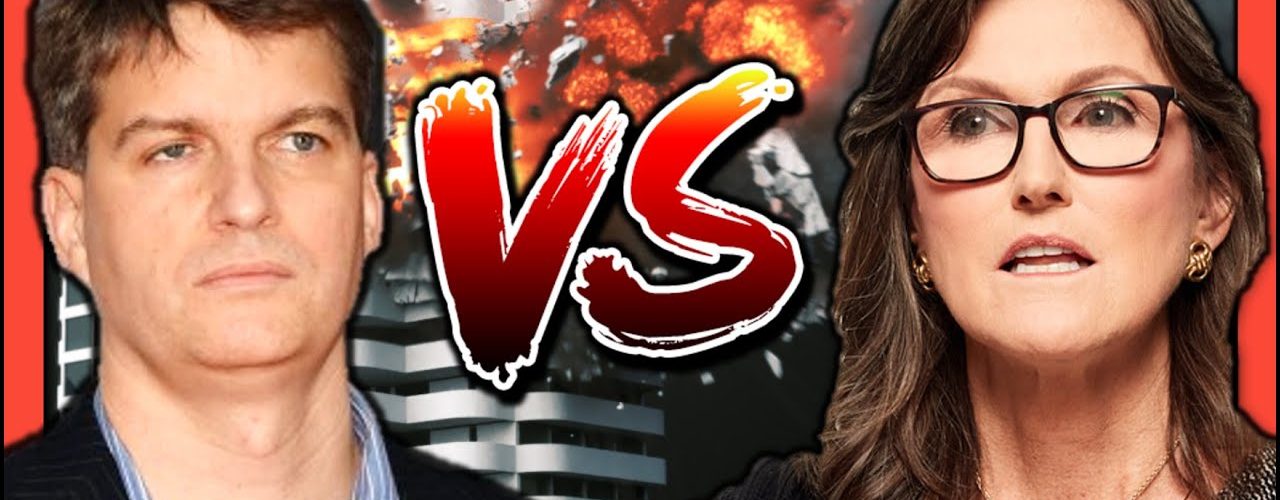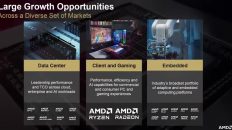Mentioned in Video:
- Michael Burry reveals $530 Million Bet Against Tesla: https://www.cnbc.com/2021/05/17/michael-burry-of-the-big-short-reveals-a-530-million-bet-against-tesla.html
- Michael Burry Bets Against Cathie Wood's ARK Invest: https://www.bloomberg.com/news/articles/2021-08-16/-big-short-michael-burry-bets-against-flagship-cathie-wood-fund
- Cathie Wood Says Wall Street Is Valuing Tesla All Wrong: https://www.marketwatch.com/story/ahead-of-tesla-results-cathie-wood-says-wall-streets-valuing-it-all-wrong-11627298084
- ARK Invest Take Advantage of Four Market Inefficiencies: https://ark-invest.com/four-market-inefficiencies/
- Support the channel and get extra member-only benefits by joining us on Patreon: https://www.patreon.com/tickersymbolyou
⚠️ #CathieWood versus #MichaelBurry. #Inflation versus #Deflation. Stock market collapse versus true exponential growth. @ARK Invest versus Scion Asset Management. Michael Burry, of #TheBigShort fame, is shorting the #ARKInvest flagship innovation fund, #ARKK and #Tesla stock (#TSLA) while talking about the biggest stock market bubble of all time. Meanwhile, Cathie Wood believes deflation, not inflation, will bolster industries and cause a stock market boom for companies on the right side of change. Could they both be right? My answer is yes and in this episode I will show you how.
Video Transcript:
00:27
Whether you're a fan of ARK Invest's thematic funds focusing on disruptive innovation
00:31
or you're someone who tracks the moves of incredible value investors like Warren Buffett,
00:36
you're probably aware of the on-going clash between Michael Burry and Cathie Wood. In case
00:41
you're not, here's the short and sweet version. Earlier this summer, Michael Burry tweeted that we
00:45
are in the greatest speculative bubble of all time in all things by two orders of magnitude. If true,
00:52
that would be quite the bummer. Around that time, the SEC filings of Burry's hedge fund, Scion Asset
00:58
Management, revealed that he has a $530 million dollar bet against Tesla. Tesla is, of course,
01:04
Cathie Wood's largest position in three separate ARK Invest funds and is ARK Invest's biggest
01:09
investment overall. Cathie Wood has well over $3 billion dollars invested in Tesla. The LATEST SEC
01:15
filings for Scion Asset Management revealed that Michael Burry now also has 30 million dollars in
01:20
put options betting directly against ARKK, ARK Invest's massive flagship innovation fund. He
01:26
also increased his short position on Tesla to over $700 million dollars. Cathie Wood responded to
01:33
that with a series of tweets addressing inflation versus deflation, bubbles versus strong markets,
01:38
and growth opportunities versus value traps, ending her twitter thread with this. To his
01:43
credit, Michael Burry made a great call based on fundamentals and recognized the calamity brewing
01:49
in the housing and mortgage market. I do not believe that he understands the fundamentals
01:53
that are creating explosive growth and investment opportunities in the innovation space. It's easy
01:59
to take everything I just shared with you and run with the narrative of bear versus bull, value
02:04
versus speculation, inflation versus deflation, bubble versus real exponential market growth.
02:10
The truth is, this is a battle of short-term versus long-term and in my opinion, all of those
02:15
other arguments are just symptoms of the time frames that Michael Burry and Cathie Wood are
02:21
operating on. Let me explain. It's currently September 2021 and unless Michael Burry has
02:26
access to special options, his options will expire in less than 2 years from now,
02:31
even sooner for some of his earlier options contracts. Over 500 million dollars of his 700
02:36
million dollar bet against Tesla was made in the first quarter of this year, when Tesla was trading
02:41
close to 900 dollars per share after rallying by something like eight hundred percent. It wouldn't
02:47
be surprising to find out that Michael Burry is already in the money with his short position on
02:51
Tesla, just like it won't be surprising that Cathie Wood will continue to make a lot of
02:55
money on her long position on Tesla over the next 5 years. In my opinion, Tesla is a fundamentally
03:01
misunderstood company because it spans many different market sectors, industries,
03:06
and technologies ranging from artificial intelligence and robotics to energy generation and
03:11
storage. That's why so much of my content focuses on the science and engineering going on at Tesla.
03:16
The way I see it, ARK Invest focuses on making long-term gains by understanding technologies that
03:22
most of the market doesn't, while Michael Burry focuses on making shorter-term gains directly from
03:27
these misunderstandings themselves, by making big bets when a company's valuation doesn't align with
03:33
its balance sheet one way or the other. Here's the issue: when one or two balance sheets look
03:38
bad compared to their valuations, you can write it off as those specific companies being too richly
03:43
valued. That explains Burry's short position on Tesla. His short position against ARKK is far more
03:49
interesting because when every company's balance sheet starts to look bad, you're forced into one
03:54
of two positions: the short-term position that we must be in the greatest speculative bubble of all
04:00
time in all things by two orders of magnitude or the long-term position that technology and
04:05
innovation are somehow allowing newer companies and markets to scale much faster than they used
04:10
to, justifying SOME of these higher multiples. Now that we've re-framed the debate as short-term
04:16
versus long-term, here's a quick clip from Cathie Wood's recent interview on CNBC's Tech Check,
04:21
where she explains this exact phenomenon and how it's actually good for her strategy:
06:53
So, it's obvious to Cathie Wood that we're not in a bubble because bubbles show certain
06:57
signs and patterns that we're not seeing in the market today, like extreme bullishness and high
07:02
momentum across the board. If we take a look at the American Association of Individual Investors
07:07
Sentiment Survey, we can see that bullishness is at 43.4% percent,
07:12
a little higher than the historical average of 38% percent, but a far cray away from even the
07:17
1-year bullish high of 57% percent we saw this past spring or the over 70% percent before the
07:24
dot com bust 20 years ago. Also, one-third of all surveyed market participants are bearish
07:30
right now, which is slightly higher than the historical average. If it were a bubble,
07:34
I'd expect the bear-to-bull ratio to be a lot more, well, bullish. All this negative sentiment
07:39
is actually great for Cathie Wood's strategy because she actively trades into stocks she feels
07:44
are getting discounted way more than they should be. People who think that ARK Invest is somehow
07:49
stuck in one position or another aren't paying attention to the holdings inside these funds;
07:54
they shift all the time. Earlier this summer, I made multiple episodes highlighting Cathie
07:59
Wood's massive moves away from genomics stocks and into deeply discounted web technology stocks
08:05
inside ARKK specifically. Cathie Wood loaded up on stocks like Twilio, Coinbase, Twitter,
08:11
Palantir, Draftkings, UiPath, and Unity Software. Since then, ARKK is up over 25% percent and many
08:17
of the stocks inside the fund are up by way more than that. Michael Burry is an incredibly
08:22
smart investor, so he'd be crazy to bet against Cathie Wood as a stock picker. So the question
08:28
we should be asking is: what exactly is he betting against with his short position on ARKK and why?
10:13
Yeah, just listen to the language here. Wright's Law. Declining production costs and projections
10:18
of demand. The truth is that these two investors aren't fighting because they're not even speaking
10:23
the same language. Michael Burry is treating ARKK like an index of stocks that are very sensitive
10:28
to inflation and rising interest rates. He's betting that inflation will go up in the SHORT
10:33
TERM, causing the value of this particular basket of stocks to go down in the SHORT TERM. Cathie
10:39
Wood is saying that deflationary forces are going to outweigh inflation over the LONG TERM and in
10:44
some cases, like the cost declines associated with electric vehicles, sooner than we expect.
10:50
And again, if you recognize their different time-horizons, Michael Burry and Cathie Wood
10:54
can both be right. Let's start with inflation. During the height of the pandemic, people were
10:59
stuck inside, so they were working on their homes and stocking up on stuff. That caused businesses
11:04
to double- and triple-order inventories, causing a lack of supply. As a result, we saw the cost
11:10
of household goods and commodities like lumber go way up. Lumber is already down by two-thirds from
11:16
its highs in early May. That inflation had two properties; it was focused on goods specifically,
11:21
since that's where people were pouring their money instead of services and experiences,
11:25
and it's temporary because services and experiences won't be shut down forever. Now
11:30
the opposite is true. As services and experiences come back into the mix, they'll be able to charge
11:35
more because there's a lot of pent-up demand and limited capacities. Traveling, going out to shows,
11:40
and so on will all cost more than they did pre-pandemic until this pent-up demand is filled,
11:46
so again, there is price inflation, but it's narrowly focused, near-term, and temporary.
11:52
Now let's talk about the deflationary forces. I already covered the first one, which is the
11:57
price of stuff coming down as pent-up demand gets filled. The second type of deflation is actually
12:03
good deflation, which is technology getting cheaper to produce thanks to Wright's Law. If you
12:08
want to learn all about Wight's Law, you can check out one of my very first episodes where I lay out
12:12
exactly how it works. [clip of that episode] The channel has come a long way but if you want
12:26
to check out that episode, I'll link it in the top right-hand corner of your screen right now
12:30
and in the description below as well. It's a real nail-biter. The effects of Wright's Law
12:35
and good deflation are everywhere. Think about the first iPhone versus the iPhone today or the first
12:41
laptop versus laptops today. This is the same type of good deflation that's responsible for electric
12:46
vehicles getting cheaper as the costs of batteries and industrial robots and so on continue to go
12:52
down. That lets these innovative companies to produce even more of their products and services,
12:57
which lowers the cost, which increases demand, which results in more production,
13:01
and that virtuous cycle goes on and on. When Cathie Wood talks about wanting companies to
13:06
spend money today to dominate winner-take-most markets in the long-term, she's talking about
13:11
them investing in this cycle of lowering costs to greatly increase demand to the point where entire
13:17
markets and ecosystems are built on top of their platforms. The final type of deflation is called
13:23
creative destruction, which is a creative way of saying that non-innovative companies are going
13:28
to get destructed because they can't deliver the same performance at the same price point. Again,
13:33
let's think about electric vehicles in general and Tesla specifically. The Tesla Model S Plaid
13:38
is the current record holder for going zero to sixty miles per hour, which it does in just under
13:43
two seconds. It also costs a fraction of the price of most of the cars on this list. And,
13:48
as you can see, more and more cars near the top of this list are all-electric and dual-motor. So,
13:53
if you're building cars on a different platform, say, an internal combustion engine, and that
13:58
platform can't compete in performance, what do you do? You cut your prices. That's permanent,
14:04
not temporary, because it creates a vicious cycle where lower prices means less profit means less
14:09
production and investment in innovation, which means less performance improvement over time,
14:14
which means lowering prices again, and so on. Winners keep extending their lead and losers keep
14:19
losing ground over time. That's creative destruction, also known as bad deflation.
14:25
So how is it that ARK Invest figured this out? Here's a clip of Cathie Wood
14:29
putting it all together.
17:07
Wright's Law, cost decline trajectories, price elasticity of demand, trends crossing
17:13
the tipping point. I'm not saying that Cathie Wood is smarter than Michael Burry or that ARK Invest
17:18
is better than Scion Asset Management. What I am saying is Cathie Wood set up ARK Invest
17:23
to understand the market from a completely different perspective than traditional asset
17:28
managers: technology platforms, not just earnings reports. The truth is, if you stop worrying about
17:34
the average P E ratio of the S and P 500 and start researching the remarkable pace of innovation,
17:41
you'll see that the real risk… is investing in the companies that are getting left behind.
17:47
This is ticker symbol you.
17:48
My name is Alex, reminding you, that the best investment you can make, is in you.
If you want to comment on this, please do so on the YouTube Video Here














